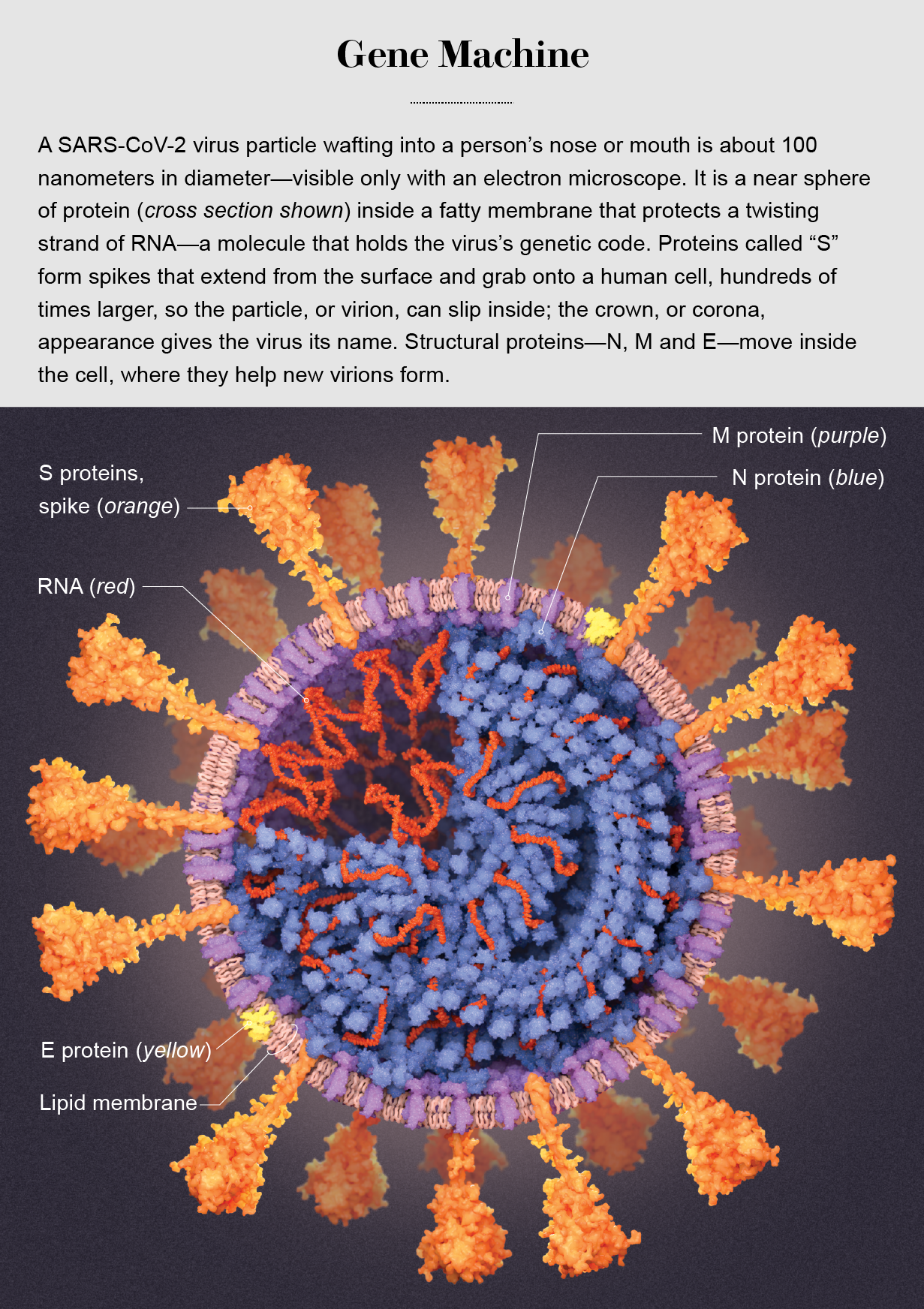Even though mysteries remain about COVID-19 and the novel coronavirus that causes the disease, scientists have generated an incredible amount of detailed knowledge about how the virus works and how we can stop it.
Thousands of different coronaviruses inhabit the planet. Four of them are responsible for many of our common colds. Two others already triggered alarming outbreaks of disease: in 2002 a coronavirus caused severe acute respiratory syndrome, which killed more than 770 people worldwide, and in 2012 a different strain started Middle East respiratory syndrome, taking more than 800 lives. SARS burned out within a year; MERS still lingers.
SARS-CoV-2 has created a far deadlier pandemic, in part because it spreads rapidly and in part because once it infects a person it can lie undetected for a long time. An individual infected with the 2002 SARS coronavirus did not transmit it until 24 to 36 hours after displaying symptoms such as fever and dry cough; people feeling ill would naturally isolate themselves, or be diagnosed by doctors, before they made others sick. But people with COVID can transmit the virus before they show clear symptoms, or they may have no symptoms at all.
Scientists, working intensely, have invented novel vaccines in record time that provide excellent protection against the disease. They have also created drugs that lessen infection and complications. In the graphics that follow, Scientific American presents detailed explanations, current as of March 2022, of how SARS-CoV-2 sneaks inside human cells, makes copies of itself and bursts out to infiltrate many more cells, widening infection. We show how the immune system would normally attempt to neutralize virus particles and how CoV-2 can block that effort. We also show how vaccines stop the intruders and how drugs can ease the disease. The knowledge this work has generated is helping humans prevail.

VIRUS INVASION AND IMMUNE RESPONSE
A SARS-CoV-2 particle enters a person’s nose or mouth and floats in the airway and lungs until it brushes against a cell that has an ACE2 receptor on the surface. The virus binds to that cell, slips inside and uses the cell’s machinery to make numerous copies of itself. They break out, leaving the cell for dead, and penetrate many other cells. Infected cells send out alarms to the immune system to try to neutralize or kill the pathogens, but the viruses can prevent or intercept the signals, buying time to replicate widely before a person shows symptoms. Vulnerable receptors are also found on other types of cells in the kidney, heart and gut.





DRUG AND VACCINE INTERVENTION
Commercial, government and university scientists have developed vaccines against COVID in record time, and the products have saved millions of lives. The experts have also devised drugs to reduce disease complications. Most drugs do not destroy the virus directly but interfere with it enough to allow the body’s immune system to clear the infection. Drugs generally do one of three things: stop a virus from attaching to a cell, prevent a virus from reproducing if it does invade a cell, or dampen an overreaction by the immune system, which can cause severe symptoms.


MUTATIONS AND VARIANTS
The SARS-CoV-2 genome is a strand of RNA that is about 29,900 bases long—near the limit for RNA viruses. Influenza has about 13,500 bases, and the rhinoviruses that cause common colds have about 8,000. (A base, also called a nucleotide, is a building block of RNA and DNA.) When viruses copy their genome, many accidental errors, called mutations, can occur. As they accumulate, they can lead to variant viruses that have new ways to infect us. The major SARS-CoV-2 variants thus far, after the initial “Alpha” virus, include Gamma, Delta, Mu and Omicron.

Read more about the coronavirus outbreak from Scientific American here. And read coverage from our international network of magazines here.



